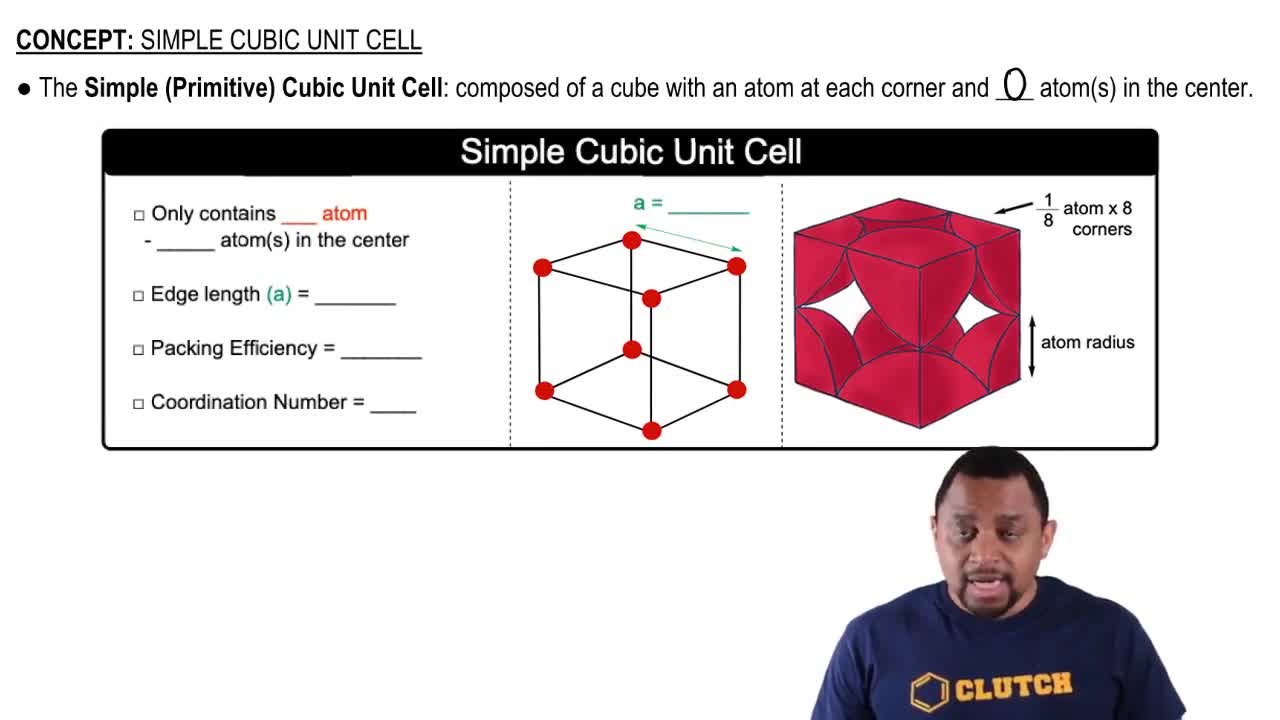Tausonite, a mineral composed of Sr, O, and Ti, has the cubic unit cell shown in the drawing. (a) What is the empirical formula of this mineral?
A particular form of cinnabar (HgS) adopts the zinc blende structure. The length of the unit cell edge is 5.852 Å. (a) Calculate the density of HgS in this form. (c) Which of the two substances has the higher density? How do you account for the difference in densities?
 Verified step by step guidance
Verified step by step guidance
Verified video answer for a similar problem:
Key Concepts
Density

Unit Cell and Crystal Structure

Molar Mass

The unit cell of a compound containing Co and O has a unit cell shown in the diagram. The Co atoms are on the corners, and the O atoms are completely within the unit cell. a. What is the empirical formula of this compound? b. What is the oxidation state of the metal?
A particular form of cinnabar (HgS) adopts the zinc blende structure. The length of the unit cell edge is 5.852 Å. (b) The mineral tiemannite (HgSe) also forms a solid phase with the zinc blende structure. The length of the unit cell edge in this mineral is 6.085 Å. What accounts for the larger unit cell length in tiemmanite?
CuI, CsI, and NaI each adopt a different type of structure. The three different structures to consider are those shown in Figure 12.25 for CsCl, NaCl, and ZnS. a. Use ionic radii, Cs+(𝑟=1.81 Å), Na+(𝑟=1.16 Å), Cu+(𝑟=0.74 Å), and, I−(𝑟=2.06 Å), to predict which compound will crystallize with which structure.
